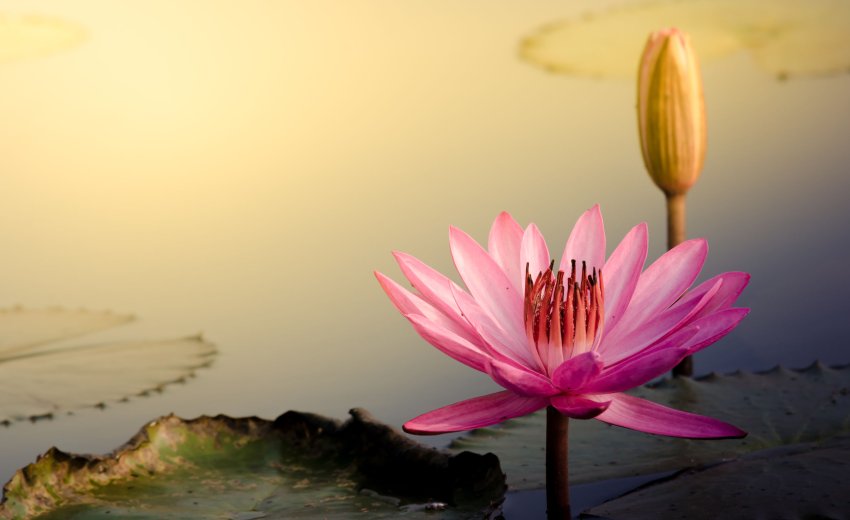The nexus of spirituality and religiosity has long haunted me. Are they intimately, inseparably interconnected or are they independent constructs? We all know bright articulate people who cheerfully admit fealty to either spirituality or religiosity (usually the former) while denying any great feeling for its partner.
How to parse spirituality and religiosity? My effort today emerges from having run into some bright and challenging minds. Let me make a rambling case for my view.
If I have learned anything from participating in myriad interfaith events, it is this: Most religious people, in their saner moments, cheerfully concede the universality that underlies different faiths of mankind.
Buddha was so moved by suffering that he walked away from his regal life. Jesus personified humility and charity, Mohammed forgave his mortal enemies, Nanak and his successor Guru-founders of Sikhism laid their heads on the line to protect those who were not Sikh. Similar examples abound in all the great religions of mankind
It seems to me that the essential spiritual message of the Masters is to discover the divinity that is inherent within each of us, and nurture it such that it defines our lives (“Munn too jot saroop haen apnaa mool pehchhaan” Guru Granth p. 441).
To my mind this universal connectivity defines essential spirituality.
Spirituality speaks of a life of introspection, of traits that define character, and values that speak of our human potential as useful productive members, even icons of society. This defines the human and his/her place not in an imaginative existence after death but here and now in the life we have earned. True that this demands individual focus, and dedication but its goal and endpoint is the community, not isolation from it. Remember that the word “Religion comes from the Latin Re-Ligare which means to bind or to connect. Connect to what? To the infinity that lies within us all.
Speaking of the expansive diversity of creation, the tenth Sikh Guru-prophet, Gobind Singh, said:
"As out of a single fire,
Millions of sparks arise;
So, from God’s form emerges all creation
Animate and Inanimate.”
Akal Ustat, p. 87.
Or look at the lines in Guru Granth, the repository of Sikh spiritual heritage that declaims an essential truth (Kabir, p. 1349): “Aval Allah nor upaaya kudrat kay sabh banday…” – from the same one light emerges all creation.
One day at the local gurduara I saw a community “leader” berating the congregants for idle casual conversation during the langar, the meal prepared and served gratis by volunteers to every congregant, that is an essential feature of every Sikh religious service irrespective of the religious identity of attendees. The leader demanded that the only conversation be of gurbani. She wanted all small talk banned within the four walls of the gurduara. Just imagine that. Over the years, I have run into more than one such “leader.”
But even though humans are spirit born people, the Spirit of God works its magic through our communal, societal existence, its language and institutions. Remember that humans, more so in their early infancy but, in fact through life have a vulnerable existence. The community, including the idle chatter therein, becomes some of the essential connecting glue of human bonding that makes survival possible. Spirituality, too, becomes institutionalized in time. Spirituality and religiosity together then morph into the vital framework of a progressive community.
Communities do not exist in isolation or in a void. History speaks of deeply spiritual people untethered to community life and they often became unable to fight existential threats. On the other hand, religiosity alone, unbridled by spiritual underpinnings, produced societies with an unexcelled record of injustice, bloodshed and wars. Spirituality alone exists but does not require being physically with others. Such existence, like that of a solitary prisoner, becomes disconnected from any life around him. One needs to touch both joy and suffering to define the core of human existence.
In any religion essential spirituality comes to us wrapped in the robes, colors. customs, texture, music and cuisine, indeed the context of a specific community. And God only knows how many religions there are, with perhaps as many more to come.
Predictably enough, institutions develop fences around them. True that good fences make good neighbors but they, along with the authority of institutional religion, direct, and often enclose us.in a straitjacket, effectively stunting the quest for spirituality in life.
Fences often become stronger, bulkier and higher. Religiosity thrives while spirituality plummets. (In modern Trumpian rhetoric like walls that might hermetically seal America from its neighbors?) Spirituality declines when walls are such that one may not look through them, climb over them, or communicate across them. Then the life of interiority that is the foundation for our societal fabric slowly dies, to be replaced by a life of dogma, doctrine and empty ritual.
In other words, spirituality explores the universe within us, religiosity defines the world around us. Spirituality speaks of values that make us human beings. In religiosity, buildings, edifices and artifacts – the pride of exteriority – thrive. How then can universal connectivity prosper?
Most people take refuge in abstract spirituality when they are looking for consolation, to transcend their suffering. They also need an empathetic shoulder to lean on when dealing with grief and joy – the slings and arrows of outrageous fortune. Remember that a collection of strangers is no sangat at all. I am pointing to our unrealistic expectations from a sangat rooted in and limited mostly to smartphones and related gadgetry.
Of course, not all doctrine and rituals are as negative as they might appear to be. They can give substance and framework even to personal spiritual practice and space. Without them, everything thing could easily disintegrate into touchy-feely miasmic fuzziness. The Gurus condemned blind, pointless rituals, not those ceremonies that connect us to our deeper values and goals.
I submit that neither religiosity nor spirituality alone sustains a well-lived life. The Sikh Doctrine of Miri-Piri takes on this conflict head on. Guru Hargobind, the sixth Guru, formalized the concept that Miri is the external world in which we operate while Piri is our inner core, our infinite identity, Sat Naam.
These two parts of the self – Miri and Piri, life of interiority and that of exteriority – both the world within and the world outside need to remain symbiotically connected. It is a life lived fully in the world, but not of the world. Rather than acting in self-interest, one acts from spontaneous intuition and awareness in every moment.
Rooted in the One, all actions flow from Hukum – the flowing pen of God, as Guru Nanak describes it in Japji. This exactly is what the doctrine of Miri cum Piri demands. For a successful life, it is this connection and balance between the inner and outer worlds that we need to continually and thoughtfully nurture. This is the path that is narrower than a “sword’s edge’ as described by Guru Gobind Singh. It is relaxing into perfect balance and acting for the good of all as guided from within.
Sikhi recognizes that our worldly needs must not be denied. For instance, look at the clear rejection of renunciation, ascetism, fasting and denial of pleasure in the false promotion of spirituality. Miri or Piri? Sikhi absolutely does not glorify one or downgrade the other. Liberation as a goal is equally available in a joyful life (“Hasa(n)dia Khela(n)dia, paena(n)dia vitchay hovae mukt,” Guru Granth p. 522). Worth citing here is also a hymn by saint Dhanna
“Jo jan tumri bhagat karantay tin ke kaaj swartaa (Rahao)
Daal seedha magao gheeo, hamraa khusi karay nit jeeo.
Pania chhadan neeka, anaaj magao sat seeka.
Gaoo bhaes magao laaveri, Ik taajan turi changeri.
Ghar ke geehan changi, jan Dhanna levae mangi.”
Guru Granth p. 695
In a rough and ready translation, Dhanna pleads thus:
“You who arranges the needs of your humble servants (Pause)
Lentils, flour, and ghee, I beg of you; My mind shall ever be pleased.
Shoes and fine clothes; And grain of seven kinds.
A milk cow and water buffalo I beg of you; And a fine Turkestani mare.
A good wife to care for home; The humble servant Dhanna begs of you.”
I also offer you a powerful hymn from gurbani that rejects a life of penury and poverty. Here the poet-saint Namdev expreses his inability to pray on an empty stomach and offers his prayer beads back to the Creator (“Bhookhay bhagati na keejae; yeh malaa aapnee leejae”Guru Granth p. 656). This longish hymn also lists many ordinary requisites of life that Namdev needs for his survival and his loyal worship.
On the other hand, Guru Granth clearly cautions us not to undervalue or forget the vital spiritual connection (“Aakha(n) Jivaa(n) visray murr jaao” P 9). Even though I leave you only this one citation to support spirituality, I assure you that are many, many more that are available within the Guru Granth.
Metaphorically, if Piri defines our roots then Miri is the fruit and flowers that serve a larger reality – the biosphere – thus the root feeds the leaves, flowers and ultimately the fruit. Living in this way we can change the world.
As someone said, “Between neighbors there are walls that must be shattered, and lines that must never be crossed.”
Spirituality and religiosity are like conjoined twins with one beating heart. They complement each other in the human creation. Tearing Miri and Piri apart results in a bifid fragmented human, no longer as productive nor useful in service to the world.
Take good care of the two legs that together make our journey in life both possible and sublime Keeping them yoked to the same plow is our onus.
Detect languageAfrikaansAlbanianAmharicArabicArmenianAzerbaijaniBasqueBelarusianBengaliBosnianBulgarianCatalanCebuanoChichewaChinese (Simplified)Chinese (Traditional)CorsicanCroatianCzechDanishDutchEnglishEsperantoEstonianFilipinoFinnishFrenchFrisianGalicianGeorgianGermanGreekGujaratiHaitian CreoleHausaHawaiianHebrewHindiHmongHungarianIcelandicIgboIndonesianIrishItalianJapaneseJavaneseKannadaKazakhKhmerKoreanKurdishKyrgyzLaoLatinLatvianLithuanianLuxembourgishMacedonianMalagasyMalayMalayalamMalteseMaoriMarathiMongolianMyanmar (Burmese)NepaliNorwegianPashtoPersianPolishPortuguesePunjabiRomanianRussianSamoanScots GaelicSerbianSesothoShonaSindhiSinhalaSlovakSlovenianSomaliSpanishSundaneseSwahiliSwedishTajikTamilTeluguThaiTurkishUkrainianUrduUzbekVietnameseWelshXhosaYiddishYorubaZulu
AfrikaansAlbanianAmharicArabicArmenianAzerbaijaniBasqueBelarusianBengaliBosnianBulgarianCatalanCebuanoChichewaChinese (Simplified)Chinese (Traditional)CorsicanCroatianCzechDanishDutchEnglishEsperantoEstonianFilipinoFinnishFrenchFrisianGalicianGeorgianGermanGreekGujaratiHaitian CreoleHausaHawaiianHebrewHindiHmongHungarianIcelandicIgboIndonesianIrishItalianJapaneseJavaneseKannadaKazakhKhmerKoreanKurdishKyrgyzLaoLatinLatvianLithuanianLuxembourgishMacedonianMalagasyMalayMalayalamMalteseMaoriMarathiMongolianMyanmar (Burmese)NepaliNorwegianPashtoPersianPolishPortuguesePunjabiRomanianRussianSamoanScots GaelicSerbianSesothoShonaSindhiSinhalaSlovakSlovenianSomaliSpanishSundaneseSwahiliSwedishTajikTamilTeluguThaiTurkishUkrainianUrduUzbekVietnameseWelshXhosaYiddishYorubaZulu






